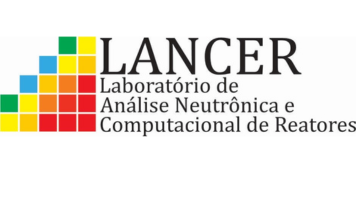At the Environmental Analysis and Computational Simulation Laboratory (LAASC), installed in block I-2000 – Sector MM2 at COPPE/UFRJ, teaching and research activities are carried out in the area of Applied Nuclear Physics. LAASC has promoted the development of research lines:
Environmental Radiological Protection
At LAASC, studies are carried out to understand radioactivity in the environment (environmental radioprotection) and to assess the environmental radiological impact. Develops research activities in high resolution gamma spectrometry of environmental samples, such as food samples (meat, grains, milk, water, among others), as well as samples of soil and naturally radioactive material (NORM) from the activities of mining and oil and natural gas exploration.
In modeling the transport of radionuclides and evaluating the impact of the release of a substance or radioactive waste in the environment, the computational codes criba are used for impact evaluation Screening Model for Environmental Assessment (CROM) and Environmental Risk from Ionizing Contaminants: Assessment and Management (ERICA ). In the computational simulation of the gamma spectrometry systems (HPGe and NAI(Tl) the Monte Carlo MCNP code and LabSOCS, a software package from Canberra that simulates efficiency curves and self-absorption coefficients without the need for radioactive sources, are used.
Modeling and Computational Simulation Applied in Radiotherapy and Nuclear Medicine
In computational modeling in radiotherapy and nuclear medicine, Monte Carlo techniques (MCNP and GEANT) and anthropomorphic simulators (human body) in voxels are used for dosimetric studies and three-dimensional simulation of problems involving radiotherapy treatments (teletherapy and brachytherapy), aiming at the more rigorous values of radiation doses in the diseased tissue and neighboring organs, allowing the minimization of the risks that patients may face and also contributing to the evaluation of dose in workers occupationally exposed to ionizing radiation.
Non-Destructive Tests with Neutrons (Neutrongraphy)
In the Neutrongraphy technique, in addition to complementing images obtained by X-rays or gammagraphy, it is used to detect defects in metallic components where there are rubbers or plastics, detection of explosives and narcotics, biological applications, inspection of heavy and thick metals, inspection of welds, among other applications.
LAASC has also sought to develop new lines of research, computational methods and experimental techniques in parallel, aiming at scientific and technological development and encouraging scientific initiation, master's and doctoral students to choose research topics that address lines of work, problems from their institutions of origin or that reflect their current personal aspirations and future professional expectations.

























